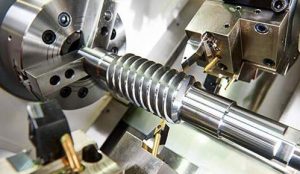Understanding CNC Prototyping Cost: Key Factors to Consider
When it comes to CNC prototyping, understanding the cost involved is essential for effective budgeting and project planning. Several factors influence CNC prototyping cost, ranging from material selection to machining complexity. Let’s explore these factors in detail to gain a comprehensive understanding of CNC prototyping costs.

Material Selection
Material Cost
The choice of material significantly impacts CNC prototyping cost. Materials like aluminum, steel, and titanium are generally more expensive than plastics such as ABS or nylon.
Material Waste
Consideration of material waste during machining is crucial. Complex geometries or tight tolerances may result in higher material waste, increasing overall material costs.
Machining Complexity
Part Complexity
The complexity of the part design directly affects CNC machining time and, consequently, the cost. Parts with intricate features or tight tolerances may require longer machining times, resulting in higher costs.
Surface Finishing
Additional processes such as surface finishing or post-processing treatments can add to the overall cost of CNC prototyping. Finishes like anodizing, painting, or powder coating incur additional expenses.
Machining Parameters
Machining Time
The time required for CNC machining is a significant cost factor. Factors such as cutting speeds, feed rates, and tool changes influence machining time and, subsequently, the cost per part.
Tooling Costs
Investment in specialized tooling, such as custom cutting tools or fixtures, can increase initial setup costs but may reduce machining time and improve efficiency in the long run.
Quantity and Batch Size
Volume Discounts
Order quantity plays a vital role in determining CNC prototyping cost. Larger production volumes often result in volume discounts, reducing the cost per part.
Batch Processing
Batching multiple parts together for simultaneous machining can optimize setup times and tool changes, potentially reducing overall machining costs.
Supplier Selection
Vendor Rates
Different CNC machining vendors may offer varying rates based on factors such as equipment capabilities, expertise, and geographic location. Comparing quotes from multiple vendors can help find the most cost-effective solution.
Quality Assurance
Choosing a reputable CNC machining supplier ensures quality parts and minimizes the risk of rework or defects, ultimately reducing overall project costs.
Conclusion
Understanding the various factors influencing CNC prototyping cost is essential for effective cost management and project success. By carefully considering material selection, part complexity, machining parameters, batch size, and supplier selection, project managers can optimize costs without compromising quality or timelines.
For organizations seeking cost-effective CNC prototyping solutions, partnering with experienced cnc prototyping cost can offer valuable expertise, state-of-the-art equipment, and efficient processes to deliver high-quality parts at competitive prices.